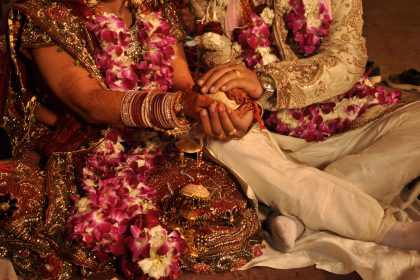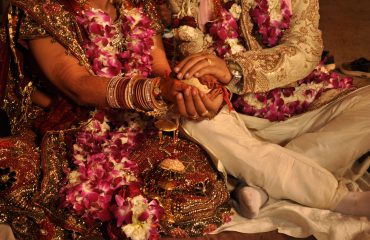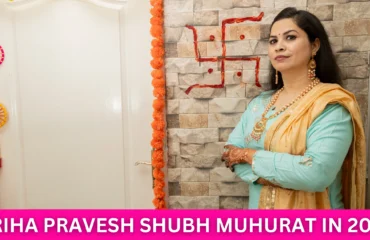
The Hindu wedding ceremony is a traditional, revered occasion that includes a number of rites and traditions. The Saptapadi ceremony, in which the bride and groom exchange seven vows in front of a sacred fire, is one of the most crucial and vital rites in Hindu marriages.
The Saptapadi ceremony is a lovely and symbolic depiction of the couple’s journey through marriage. The Sanskrit roots of the word “Saptapadi” are “Sapta” for “seven” and “Padi” for “steps.” The seven steps that the bride and groom take together during the ritual stand in for the seven vows that they exchange with one another.
The Kanyadaan ritual, in which the father of the bride gives her away to the groom, is followed by the Saptapadi ceremony. A sacred fire is blazing in front of the bride and groom as they are seated facing one another. The Pandit, a Hindu priest, leads the couple through the procedure while reciting mantras.
The bride and groom take seven circles around the sacred fire while holding hands, each round symbolizing one of the seven vows they exchange with one another. The couple imitates the Hindu priest as he utters a mantra at each stage. The vows state that the couple will be faithful to one another, cherish and support one another, share each other’s joys and sorrows, and be each other’s companions in all facets of life.
Seven vows:
The first vow is the vow of friendship, where the bride and groom promise to be each other’s friend and companion, and to share each other’s joy and sorrow.
The second vow is the vow of mutual respect, where the couple promises to respect each other’s individuality and uniqueness.
The third vow is the vow of sharing, where the bride and groom promise to share their joys and sorrows and to support each other in all circumstances.
The fourth vow is the vow of love, in which the couple swears to love one another without conditions and to stand by one another in times of need.
The fifth vow, a prayer for fertility and the welfare of the couple’s future offspring, is the vow of fertility.
Similarly, the couple makes a commitment to uphold each other’s loyalty and faithfulness throughout their lives in the sixth vow, which is the vow of allegiance.
The seventh and final vow is the vow of togetherness, where the bride and groom promise to be each other’s life partner and to be with each other through thick and thin. After the seventh vow, the Hindu priest declares the couple as husband and wife, and they are considered to be united in marriage.
The Saptapadi ceremony is a crucial and revered Hindu wedding ritual that represents the merging of two souls via marriage. The vows the couple makes to one another symbolize their dedication and commitment to one another as well as their journey through married life together. A Pandit, or Hindu priest, conducts the ceremony while directing the couple and reciting the mantras.
Conclusion: Saptapadhi Meaning in Hindu Marriage
In conclusion, the Saptapadi ceremony, which symbolizes the seven vows that the bride and groom make to one another, is a lovely and significant rite in Hindu weddings. It represents the couple’s dedication to one another and is a sacred and important event in their lives. The rite, which is performed by a Hindu priest or Pandit, marks the start of a new chapter in the life of the newlyweds.



